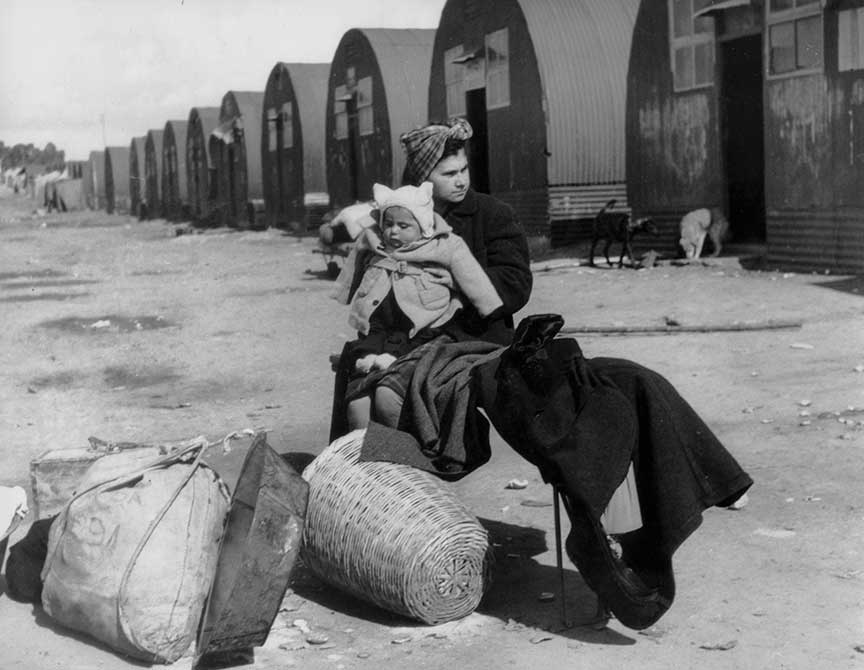1949 Massive Immigration Forces Israel to Establish Temporary Housing- Ma'abarot

immigrant waiting to move in to housing
The overwhelming number of newcomers forced Israel to settle many of these new immigrants in temporary housing. In the first 18 months of the State 340,000 immigrants arrived
Beyond combating the war, the government's foremost objective was to enable all Jews in displaced persons camps in Europe to migrate to Israel, and migrate they did. Between September 1948 and August 1949, fifty-two refugee centers across Europe were shut down as their Jewish inhabitants moved to Israel. Moreover, a substantial portion of Bulgarian and Turkish Jews also relocated during this period. Additionally, the Communist regimes in Poland and Romania permitted Jews residing there to emigrate to Israel.
Between May 15, 1948, and June 30, 1953, Israel's Jewish population doubled. In the state's initial 18 months, 340,000 Jews arrived. This unparalleled influx forced Israel to improvise to provide food and shelter to all newcomers.
The abandoned Arab homes, vacated by Arabs fleeing the country, were the initial solution for housing, but they quickly filled up. Although new homes were being built, the pace of even the most basic home construction couldn't keep up with the housing demand. Tent cities first emerged around Haifa, the port of entry for all immigrants, but it was soon decided to disperse the population more broadly across the country. By 1951, 53 camps housing 97,000 people contained 51,000 tents. The Jewish Agency provided food through a central kitchen. The main issue with these camps was the lack of employment, making residents dependent on government support.
Thus, transit camps were planned outside larger cities where work was available. The first ones sprouted on the outskirts of Tel Aviv, proving relatively successful, with each family given a basic stove for cooking and many immigrants finding temporary work.
By November 1951, 127 temporary housing sites, or Ma'aborot as they were known in Hebrew, were providing temporary homes for 223,000 people. Initially, residents expected to stay for just two or three months. In reality, the average stay in a Ma'aborot extended to two years.
Life in the Ma'aborot was particularly challenging during the harsh and rainy winters of 1951 and 1952.
The Ma'aborot began to be dismantled in 1953, with many people transitioning to permanent housing. Thus, by the end of 1954, the Ma'aborot housed only 90,000 people. Some of the Ma'aborot transformed into new towns, including Sderot, Qiryat Malachi, Yerucahm, Bet Shemesh, and Qiryat Shmona. Others morphed into neighborhoods in existing cities like Kefar Necham in Raanana and Pardes Katz in Bnei Braq. Although the majority of residents left the Ma'aborot, it wasn't until the latter half of the 1970s that the final buildings in the Ma'aborot were replaced and the last residents departed. From a practical perspective, the Ma'aborot served a crucial transitional purpose for a state struggling to construct housing quickly enough. However, they also became a cultural symbol of a population that felt overlooked.
 >
>